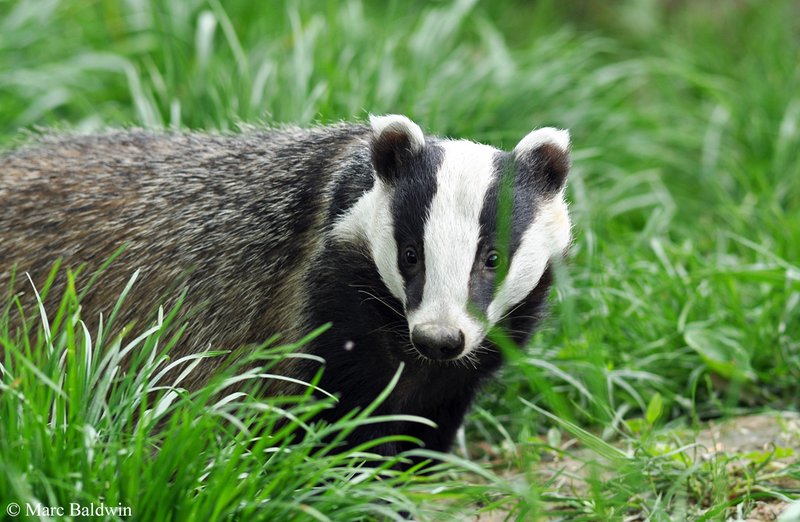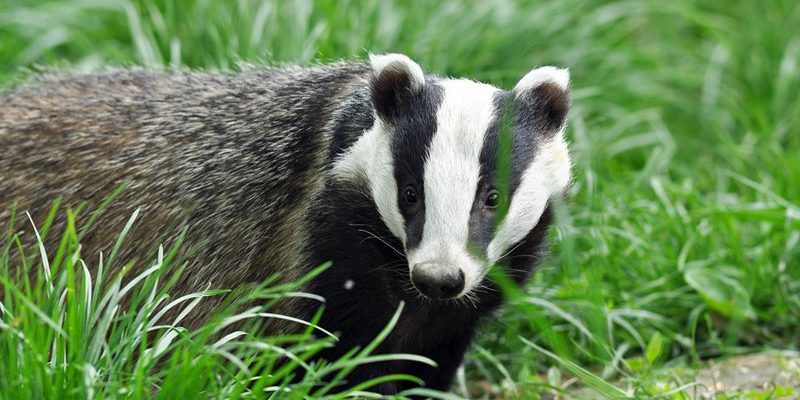
Badgers might look like chunky little creatures with their distinctive black and white stripes, but there’s so much more to them than meets the eye. Picture a small, furry warrior, equipped with sharp claws and an unyielding spirit. These critters are not just adorable; they play a vital role in the ecosystem. If you’ve ever wondered about their behaviors, habitats, and quirky lifestyles, you’re in for a treat!
Imagine walking through a forest and stumbling upon a large burrow. It’s not just any burrow—it’s the bustling home of a badger. These fascinating animals have a unique social structure, love to dig, and are surprisingly clever. They’re a blend of charm and strength, making them an essential component of their environments. Let’s dive deeper into the world of badgers and uncover their many secrets.
What Are Badgers?
Badgers belong to the family Mustelidae, which also includes otters and weasels. Particularly, the European badger and the North American badger are the most well-known species. They have a stocky build with short legs, and their characteristic markings on their faces set them apart from other mammals. Badgers are typically nocturnal, meaning they’re most active at night, foraging for food and socializing with other badgers.
One of the most fascinating aspects of badgers is their *fierce loyalty* to their family groups, called cets. These cets can include multiple generations living together, which helps them maintain a strong bond and defend their territory. Think of it like a neighborhood block party where everyone helps out and looks out for one another—it’s quite a heartwarming sight!
Physical Characteristics
When you first lay eyes on a badger, their robust body structure is hard to miss. They have dense fur, which can be gray or brown, with distinct facial markings that look like they were painted on. Their short legs give them a sturdy appearance, while their long claws are perfect for digging. Here’s an interesting fact: these claws can grow up to 2 inches long! That’s some serious digging power, allowing them to create extensive burrow systems.
Most badgers weigh between 20 to 30 pounds, with adults typically measuring around 2 to 3 feet in length. While their size may seem intimidating at first, it’s essential to remember that they are more likely to dig and hide than confront a threat head-on. After all, who wants to tussle when you can burrow away in comfort?
| Characteristic | Details |
| Size | 2 to 3 feet in length |
| Weight | 20 to 30 pounds |
| Habitat | Woodlands, grasslands, and farmlands |
| Diet | Omnivorous: insects, small mammals, fruits, and roots |
| Speed | Up to 30 mph when startled |
| Lifespan | 5 to 14 years in the wild |
Habitat and Distribution
Badgers are quite adaptable when it comes to their choice of habitat. You’ll often find them in woodlands, grasslands, and even agricultural areas. They prefer regions that allow for easy burrowing, providing them with both shelter and a means to access food. This versatility contributes to their widespread distribution across Europe, North America, and parts of Asia.
In urban areas, badgers can sometimes be spotted rummaging through gardens or parks. Their ability to thrive in various environments shows just how resourceful they can be. Imagine them navigating between bushes and climbing under fences, practically playing a game of hide and seek with curious onlookers. They’re sneaky little critters!
Diet and Feeding Habits
Badgers are omnivores, which means their diet is quite diverse. From insects and small mammals to fruits and roots, they have a wide-ranging menu. They are particularly fond of earthworms, which they can dig up with their incredible claws. You might think of badgers as nature’s little gardeners; as they dig and forage, they help aerate the soil and control insect populations, making them valuable to their ecosystem.
For badgers, feeding is not just about filling their bellies; it’s also a social activity. When they forage in groups, they communicate through a series of grunts and snorts, making it a lively gathering. Imagine a family reunion where everyone is sharing stories over a delicious meal—something you wouldn’t want to miss out on!
Behavior and Social Structure
The social structure of badgers can be likened to a close-knit family. Living in cets, they often include a mix of parents, offspring, and sometimes even grandparents. This cooperative lifestyle helps them raise young ones and defend their territory against intruders. As they share responsibilities, from foraging to maintaining their burrows, they demonstrate the importance of teamwork in the wild.
Badgers are predominantly nocturnal, which means they come alive when the sun sets. You may wonder how they manage in the dark. Their keen sense of smell and excellent hearing help them navigate and find food even during the night. Imagine slipping out for a midnight snack; badgers do it all the time, but they also keep a watchful eye for any potential threats!
Reproduction and Lifespan
In terms of reproduction, badgers typically mate during the late winter or early spring. After a gestation period of about seven weeks, female badgers give birth to a litter of 1 to 6 cubs. These little ones are born blind and helpless, relying entirely on their mother for survival. It’s quite touching to see how protective she is, nurturing them until they’re ready to explore the world around them.
As for their lifespan, badgers can live anywhere from 5 to 14 years in the wild. However, many face threats from predators, habitat loss, and human interference, which can dramatically shorten their lives. Just think about the challenges they encounter daily; it truly is a tough world out there for a badger!
Conservation Status
While badgers are generally not considered endangered, they do face threats from habitat destruction, road accidents, and hunting. In some regions, they are protected by law, while in others, their populations are managed through regulated hunting. Conservation efforts aim to preserve their habitats and promote awareness of these charming creatures.
Understanding the challenges badgers face can help us contribute to their conservation. Simple actions, like respecting wildlife areas and supporting local conservation projects, can go a long way. Imagine being a part of preserving the legacy of these incredible animals—it’s an empowering thought, isn’t it?
Fun Facts About Badgers
- Badgers can dig a burrow as deep as 6 feet!
- They often share their digs with other animals, like foxes or rabbits.
- Badgers can run at speeds of up to 30 mph when startled.
- They have an exceptional sense of smell, which helps them find food.
- Badger cets can have multiple generations living together.
FAQ
What do badgers typically eat?
Badgers have a varied diet that includes insects, small mammals, fruits, and roots. They are particularly fond of earthworms, which they dig up with their strong claws. This omnivorous diet allows them to adapt to different environments and food availability.
Are badgers dangerous to humans?
Generally, badgers are not a threat to humans. They prefer to avoid confrontation and will usually dig or run away if they feel threatened. However, like any wild animal, they can defend themselves if cornered, so it’s always advisable to observe from a distance.
How do badgers communicate?
Badgers use a variety of sounds to communicate, including grunts, snorts, and growls. They express different emotions and warnings through these vocalizations, contributing to the social dynamics within their groups.
Where do badgers live?
Badgers can be found in a variety of habitats, including woodlands, grasslands, and agricultural areas. They prefer regions that allow for easy burrowing and provide access to food sources, making them quite adaptable to different environments.
What is a badger’s lifespan?
In the wild, badgers typically live between 5 to 14 years. Their lifespan can be affected by various factors, including predators, habitat destruction, and human interference.
Do badgers hibernate?
Unlike some mammals, badgers do not hibernate in the traditional sense. They may enter a state of torpor during the coldest months, reducing their activity. However, they remain awake and may forage for food when necessary.
How can I help protect badgers?
You can contribute to badger conservation by supporting local wildlife projects, being mindful of their habitats, and respecting wildlife areas. Simple actions can help protect their environments and ensure their populations thrive.
Can badgers be pets?
Badgers are wild animals and are not suited to life as pets. They have specific needs that are challenging to replicate in a domestic environment. Wild animals should be left in their natural habitats to thrive.
What are the main threats faced by badgers?
Badgers face several threats, including habitat loss, vehicle collisions, and hunting. Conservation efforts are essential to mitigate these challenges and promote awareness about their importance in ecosystems.
How do badgers care for their young?
Mother badgers are highly protective of their cubs. They nurse them until they are weaned and teach them essential survival skills, allowing them to become independent as they grow. This nurturing behavior is crucial for the cubs’ development.
Are badgers solitary or social animals?
Badgers are social creatures that often live in family groups called cets. Within these groups, they work together to raise young and maintain their burrows. Their social structure enhances their chances of survival in the wild.

